Race for Water means many things: it’s our Foundation’s name and our mission statement, but we’ve never taken those words as literally as we have in Cuba. Like Havana’s two million residents, we’ve been racing for water every single day—seeing and experiencing the difficulty of getting water, and the pollution that affects this precious and vital resource.
Since the Race for Water Odyssey began, we’ve had no problems getting freshwater or drinking water, either at sea or on land. In Madeira, we filled our potable water tank before heading off across the Atlantic, and our on-board desalinator topped it off during the trip. In Bermuda, we only had to connect a hose from the dock to the boat, and fresh water flowed from every tap on board. But in Havana it was a different story, both for the boat and the crew.
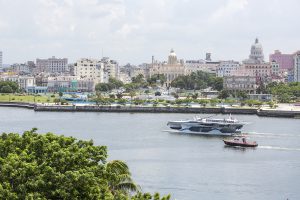
It took us 13 days at sea to reach Cuba, and during that time we saw only a few pieces of plastic waste. We picked up a bunch of water bottles in the Bermuda Triangle, and that was it. But as soon as we got close to Cuba and its coastline, the game changed completely. Water and dish soap bottles, sandals, jugs, plastic bags, and unidentifiable hunks of garbage floated by—a “welcoming committee” that drove home the importance of our goal—saving the oceans.
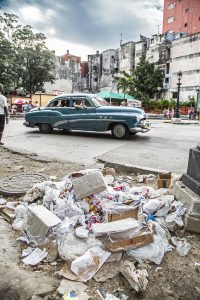
Once in Havana, we passed the citadel, the mouth of the harbor, and then the commercial port’s dock. We were happy to be back on land and meet up with the rest of the team. But the next day, we couldn’t escape reality—the clear water of the Bahamas was a distant memory. Floating debris wallowed in the soupy water, thick with hydrocarbons, oil, and tons of discarded plastics in every shape and size. The smell was nauseating, and the water certainly wasn’t blue—it ranged from greenish to dark brown.
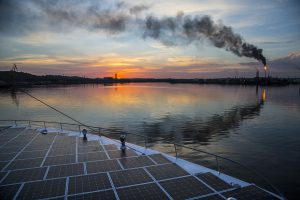
We were shocked to note that in less than 24 hours, Race for Water’s waterline had been marked by a brown “bathtub ring.” And the race for water was on: the port has no fresh water supply infrastructure, so we had to reserve a barge. Problem one: the barge water wasn’t potable, so we could only fill the 500 liter tank for the toilets, washing machine, dishwasher, etc. (Serious) problem two: we had no option but to buy drinking water in plastic bottles for ourselves and our guests. The team was highly annoyed—we’re on a mission to fight this kind of pollution, and here we are loading up on bottled water against our own convictions. Beer and rum would work too, but they don’t keep for very long!
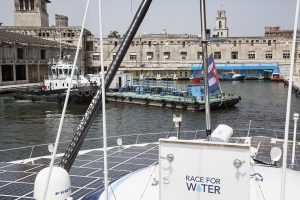
During our three-week stopover, Race for Water often had to move between the port and a mooring in the bay. But wait, there’s more: we couldn’t use the desalinator because the water is too dirty, and we could only get water from the barge when we were docked. Because the 500 liter tank isn’t enough for all of Race for Water’s needs for many days in a row, we had to fill up every available bucket and tub every time the barge came by—and even so, we had to keep our water use to a bare minimum. We all learned to bathe with a bucket and a dipper, we only ran the washing machine when the barge was filling the tank, and we loaded the dishwasher to the max. Everyone on board had to commit to this with no exceptions.
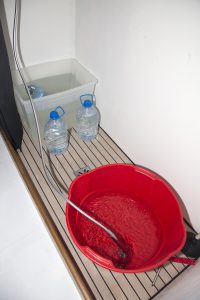
We even took advantage of a thunderstorm to give the solar panels and pontoons a wash. But that storm also flooded the streets of Havana, washing garbage from tourists and locals alike directly into the bay. Within half an hour, a flotilla of plastic bottles, sandals, and other trash surrounded Race for Water at her mooring—clear evidence that there are not enough recycling plants in Cuba.
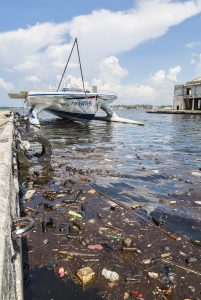
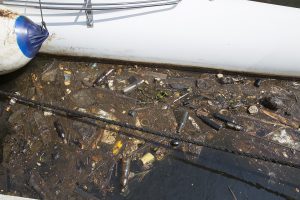
The day after we arrived, we held a seminar on board Race for Water. The attendees included Cuban officials, the Swiss, French, German, Panamanian and Argentinian ambassadors, and the local and international press. The team described the Foundation, the on-board renewable energy technologies, and the machine developed by ETIA to recycle discarded plastic into synthetic gas. Over the course of the evening, we realized the magnitude of what needs to be done to improve living and environmental conditions in Cuba—but we also realized that the Cuban people have the energy and desire to make it happen. They’re fully aware of the pollution situation, and the resulting environmental and health challenges.
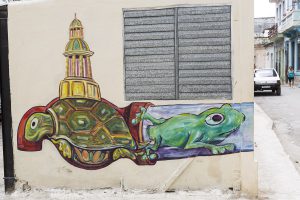
Studies began in 1980 to build wastewater treatment plants upstream from Havana Bay. Sadly, lack of funding was a major roadblock: the Cuban government doesn’t have the money to build them, so most were dropped. Moving the oil refinery away from the bay is an enormous and highly symbolic project. But with an estimated budget of 1.5 billion, making the shoreline livable with beaches, swimming areas, and sailing clubs is a dream that’s been put on hold. Still, a handful of projects are taking shape with funding from Spanish donors. One of our guests commented, “That’s the problem in developing countries; we need to modernize our infrastructure but there’s not enough funding.” In Havana’s streets, it’s a harsh reality. Water outages happen nearly every day. Some neighborhoods have been without running water for over two months. Tanker trucks deliver water to apartment buildings, hotels, and restaurants, giving priority to the heavily-touristed old town while neglecting residential neighborhoods. On the outskirts of Old Havana, in an alley with crumbling pavement, seven pipes stick out of the ground. Our guide, Michel, tells us, “This is where the tanker trucks fill up.” We’re not sure whether to laugh or cry.
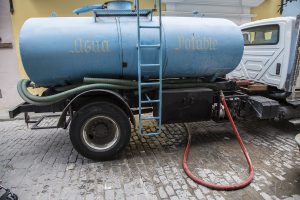
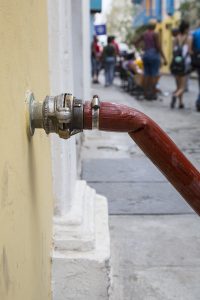
But even this can’t keep the courageous and optimistic Cubans down. There’s no shortage of ideas and actions, such as the very active Acualina association, and its president Angela Corvea Martinez. She works to educate the public, especially children, about topics such as biodiversity, climate change, natural resources and water pollution. With the help of volunteers, she travels throughout Cuba to get more and more activities going: beach cleanups, waste reclamation, planting trees. She also calls on individuals to work together and consume less. We had the pleasure of welcoming these people on board; their visit will stay with us throughout our journey, and we were all so moved and hopeful!
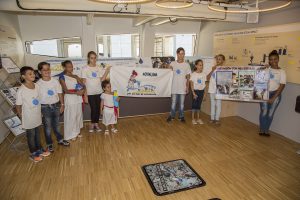
Hope is key. Mass tourism is coming to Cuba, and along with it a tidal wave of pollution of all kinds, making an already critical situation worse. There’s a serious lack of education in Cuba, and some beaches already bear the marks—from afar, they look like paradise. Up close, they’re littered with plastic bottles and bags floating between the tides. Is this the price of opening the country to visitors? I dare to hope that it isn’t. Cubans are aware of the problem but they have other, higher priorities, like living decently, for starters. There’s a huge gap between wanting to simply live, and the Cuban reality, which isn’t so simple.
Cubans are fighters. They love their island and its one-of-a-kind culture. They have to buck the trends and choose responsible tourism and a balanced economy. As I’m writing this, one or two cruise ships a day have docked at the port of Havana, unloading thousands of tourists. Here’s the question: pollution is a global problem, so shouldn’t we, as citizens of the world, do our part and change the way we travel, among other things? At sea, we talk about looking ahead. And if we look ahead, we need to do everything possible to limit the impact of overconsumption, and work to preserve our blue planet and all who live here.
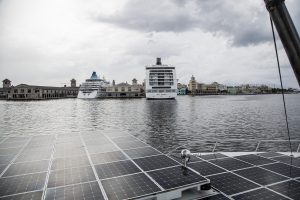
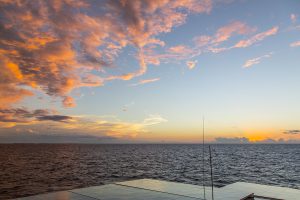
Annelore (first mate)